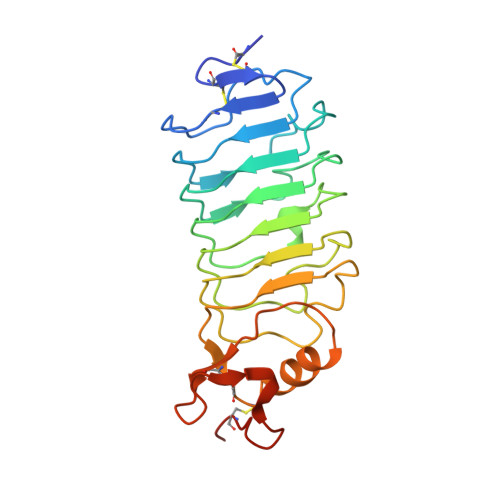Production of Slit2 Lrr Domains in Mammalian Cells for Structural Studies and the Structure of Human Slit2 Domain 3.
Morlot, C., Hemrika, W., Romijn, R.A., Gros, P., Cusack, S., Mccarthy, A.A.(2007) Acta Crystallogr D Biol Crystallogr 63: 961
- PubMed: 17704564
- DOI: https://doi.org/10.1107/S0907444907035470
- Primary Citation of Related Structures:
2V70 - PubMed Abstract:
Slit2 and Roundabout 1 (Robo1) provide a key ligand-receptor interaction for the navigation of commissural neurons during the development of the central nervous system. Slit2 is a large multidomain protein containing an unusual domain organization of four tandem leucine-rich repeat (LRR) domains at its N-terminus. These domains are well known to mediate protein-protein interactions; indeed, the Robo1-binding region has been mapped to the concave face of the second LRR domain. It has also been shown that the fourth LRR domain may mediate Slit dimerization and that both the first and second domains can bind heparin. Thus, while roles have been ascribed for three of the LRR domains, there is still no known role for the third domain. Each of the four LRR domains from human Slit2 have now been successfully expressed in milligram quantities using expression in mammalian cells. Here, the crystallization of the second and third LRR domains and the structure of the third LRR domain are presented. This is the first structure of an LRR domain from human Slit2, which has an extra repeat compared with the Drosophila homologue. It is proposed that a highly conserved patch of surface residues on the concave face may mediate any protein-protein interactions involving this LRR domain, a result that will be useful in guiding further studies on Slit2.
Organizational Affiliation:
European Molecular Biology Laboratory, 6 Rue Jules Horowitz, BP 181, 38042 Grenoble, France.















